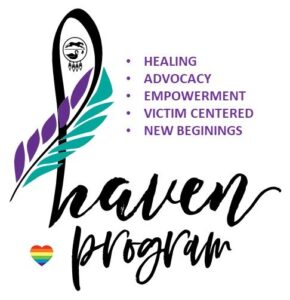H.A.V.E.N. Update
By Cathleen Osborne-Gowey (Program Admin – Crime Victim Advocate) COsbornegowey@estoo.net
Upcoming Events for August:
Support Group – please call office date and time
Children’s Powwow Virtual Event – celebrating our kiddos and their connection to our culture
Please call our office or look on our social media sights (Facebook, Twitter, and Instagram) and our website (havenprogram.com) for updates.
Program Update:
Hello all –
Summer is beginning it’s winding down process with school starting just around the corner. Some students may go back full time, others part time, and others online learning only. Whatever form of school your kiddos are going back to bullying can still happen. This article focuses on what forms bullying can take.
Also, look next month for our continuation article on bullying and our Acts of Kindness online event where kiddos can upload or email their “acts of kindness” that combats bullying and enter to win AWESOME prizes.
What is bullying?
Bullying is different from the typical disagreements or conflict that occur between friends or classmates. What’s the difference?
It’s bullying if:
The person is being hurt, harmed or humiliated with words or behavior.
The behavior is repeated, though it can be a single incident.
It is being done intentionally.
The person being hurt has a hard time defending themselves from the behavior.
The student(s) who are doing it have more power.
How is Someone Bullied?
Physical
This one’s easy to recognize. This type of bullying includes perceived intent to harm, such as threats or “pretending” to physically harm the target (e.g., flicking fingers or extending hands close to the target’s eyes or face to cause a withdrawal reaction).
Examples:
Hitting
Kicking
Pushing
Taking or damaging property
Forced or unwelcomed contact
Verbal
It’s really common because it is quick, direct, and easy to do. Verbal bullying is the most common type of bullying and the easiest to inflict on other children. It is quick and direct. Children learn at a very early age how to bully other children verbally. It begins with unsophisticated name calling, usually using words that adults tells children are forbidden or unacceptable.
Examples:
Teasing
Name calling
Making threats against the target
Intimidating
Making demeaning jokes about someone’s differences
Spreading rumors
Gossiping
Slandering (spreading false, negative information)
Emotional
This type of bullying is more sophisticated. It’s calculated and often done by a group. It can be the most difficult behavior for children to define as bullying because they may feel as if they did something to deserve it. They may not recognize the behavior as bullying because it is typically not physical, or they may not understand why it is happening to them. This is nasty stuff. It hurts people on the inside and makes them feel bad about themselves.
Examples:
Exclusion
Social manipulation
Telling someone who they can and cannot be friends with
Spreading rumors
Humiliation
Cyberbullying
Using technology is the newest way to bully. Cyberbullying is when the Internet, cell phones or other devices are used to send or post text or images intended to hurt or embarrass another person.
Examples:
Sending harassing, embarrassing, or otherwise unwelcome emails or text messages
Threats
Sexual harassment
Hate speech
Ridiculing someone publicly in online forums
Posting lies, rumors or gossip about the target and encouraging others to distribute that information
You are NOT alone – It’s Safe to Tell – Haven is here to help!
Drama. Bullying. Teasing. Harassment. No matter what you call it, it hurts. If you’re pushed, hit, or your things are ripped off or trashed, it can hurt physically. If you’re ignored by friends or cruel things are posted about you online, it can hurt emotionally. If it happens to you, you’ve probably asked yourself, “Why me?” You know how painful it is to be treated this way.
So seriously, what can you do? A lot!
You can take back control, but you don’t have to do it on your own. Remember, bullying is never your fault and you have the right to make it stop. Begin taking back control by talking to your parent or an adult you can trust.
If your child is being bullied please know you are not alone and REACH OUT!
If you are able please call or see the messaging links above:
Haven Office: 918-554-2836
Text Line: 918.533.3070
Crime Victim Advocate: 541.602.0616
Program Website: https://havenprogram.com/
Facebook: HAVEN Tribal Program, Twitter: @ProgramHaven, Instagram: HAVENTRIBALProgram.
Our advocates are here to help!
After hours you can reach our local Community Crisis Center at 1.800.400.0883 and Strong Hearts Tribal Hotline at 1.844.762.8483





